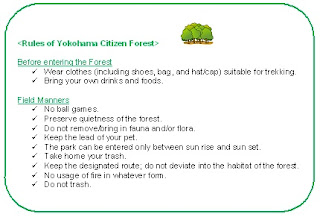Long long time ago, the north of my house was a forest. A developer, Tokyu Land Co. bulldozed all and made a town of detached houses as a bed-town for Tokyo. When they were busy cutting down the trees, I was a 4th grader. One afternoon, one of my childhood buddy, Yoshiko, and I loungered a perfectly paved street home from school. Suddenly, we heard rapid and rhythmic taps of 4 foot, tak-tak-tak, from our behind. It briskly caught up with us. When we turned our heads, a grey hare that looked enormous rushed past between us. “Wooooooooooooow!” Without thinking, we started to chase it. No avail. In no time, the hare turned left at the corner of Aoki family. … Since then, I always wondered what happened to the hare afterwards. It ran to the direction of downtown where there already were lots of cars, trains, stores, office buildings, etc. Its prospect of survival as a hare was almost non-existent. I was thinking the incident was a farewell moment for us to the nature of Yokohama … we lost it forever …
Niiharu Forest was Satoyama for Niiharu Village. It has several orchards for the village life. Many of them have their own landlords, and we cannot enter without permission. Though one of them, an orchard of chestnuts, is under the full-responsibility of the city, and Lovers of Niiiharu is taking care of the place. It is rather a strenuous task. Niiharu Forest is comprised of small but steep hills, and the chestnut orchard is on a very sharp slope. If the undergrowth is clear, the ripen nuts would tumble down to the bottom of the hills so that harvesting would be easy. I guess it was the original strategy for those who planted the chestnut trees. However, as now Lovers do the forestry only once a week for 70ha area, taking care of the chestnuts’ orchard is almost once or twice a year thing. Tropical or not, a rain forest is ferocious especially during summer. In August, the orchard in Niiharu is completely covered by tall grasses. Unless we mow them, the nuts cannot roll down, but will be stuck somewhere within the vegetation. Moreover, pueraria montana and other vines were sprouting from everywhere and climb up the trees, which could kill the entire chestnuts’ orchard. On top of all of these, the chestnuts of Niiharu satoyama has bamboo forest neighbor whose slope is even steeper than for the chestnuts. The geography is difficult for anybody to thin the bamboos, and thus there are lots of bamboos invading into the chestnuts’ territory. Lovers must deal with everything before the fall when the chestnuts are ready to be harvested. So, one sweltering August weekend, Lovers volunteers ventured into the chestnuts’ place to shear the undergrowth.
 |
| At the beginning |
The chestnuts’ orchard in Niihaaru is known for lots of lilium auratum. We volunteers decided to leave them standing tall as much as possible. Other grasses were candidate to be cut. Of course, invading bamboos must be cut down. There were several fallen chestnuts that could be hazardous for any humans entering the orchard. They must be cleared as well. Some of the fallen trunks and boughs were large. It was a turn for chainsaws. As the slope is sharp, it was difficult to maneuver mowing machines or even hand sews. The place was very rich for any undergrowth, not only for lilies, but also polygonatum odoratum, many ferns, etc. etc. We had to push over all of these slowly to go forward. It was a muggy day. We sweat profusely. Half sized water bottles became empty quickly. With the thunderous noise of mowing machines, we climb up the hill. It was a meditative work … doggedly trimming the grass.
 |
| Menace of bamboos |
 |
| We started from the
bottom of the hill … What happened for this fallen tree? |
 |
| Polygonatum odoratum
bear fruits in August. Oh, by the way, I recently learned they are edible in early spring. It was the-end-of-winter delicacy in northern Japan. |
Then, suddenly, from the right, there came an airy sound of steps approaching rapidly to me in the mechanical echoes of machines. I felt confused. What is going on? Abruptly, a large brown colored hare appeared from beneath the grasses, and rushed down. This time, I was completely speechless. “!?!????” It ran into the yet un-mowed undergrowth, and disappeared.
 |
| People say they are footprints of a hare. |
I felt I had to apologize it for making noise without a proper greeting … I am sorry as we humans are so rude to disturb your quiet life ... Though, this time, I did not worry about its survival. The hare would soon return to the orchard after our mowing. Maybe, the first customers for this chestnuts orchard are the hares in Niiharu each fall. It is a sharing economy of different kind. I’m looking forward chestnut gathering. :)
 |
| After mowing |
Office for the Park Greeneries in the North 北部公園緑地事務所
Yokohama Municipal Government Creative Environment Policy Bureau 横浜市環境創造局
Phone: 045-311-2016 (I guess in Japanese only)
FAX: 045-316-8420 (I hope there is somebody who can read English …)
Niiharu Administrative Office / Satoyama Exchange Center 新治管理事務所・里山交流センター
Phone: 045-931-4947
Fax: 045-937-0898
Email: info@niiharu.jp http://www.niiharu.jp/





No comments:
Post a Comment